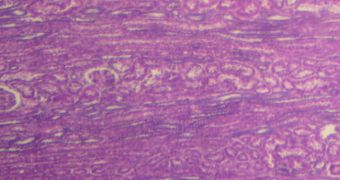A team of investigators from the University of Texas Health Science Center San Antonio announces the discovery of a mechanism inside the kidneys that allows the organs to play a significant role in regulating the blood pressure throughout the human body.
This is done by a structure called the distal nephron, which is basically the end segment of the working unit in the kidney, the nephron. There are about 1 million such units in each of the two kidneys an average human has.
Their role is multiple and includes clearing the blood stream of contaminants and chemicals that reached their expiration date, recycling some substances back in the body for further use, and also gathering and eliminating excretion products as urine.
Inside these units, the team behind the new study says, the distal nephron is also engaged in regulating blood pressure, by controlling the amount of sodium found in the bloodstream.
The fact that this process is taking place is nothing new, but what is new is the discovery of the way this essential function of nephrons is regulated. The UT team was able to identify the local regulatory system that manages the function of distal nephrons.
In a study they conducted on unsuspecting lab mice, the researchers were able to determine that damage affecting this local system could result in improper salt retention in the kidneys, which would then translate into hypertension.
“These studies provide the first unequivocal evidence of a blood pressure control system in the distal nephron of the kidney,” explains James Stockand, PhD, the senior author of the new research.
“It turns out control of sodium re-absorption by this system is as important to normal blood pressure regulation as is a better-understood system, called the renin-angiotensin-aldosterone system, which works outside the kidney,” adds the expert.
Stockand also holds an appointment as a professor of physiology at the Health Science Center. “Our work identifies a possible new therapeutic target,” he adds, quoted by Science Blog.
Funding for the new investigation came from the American Heart Association (AHA) and the US National Institutes of Health (NIH). The team that conducted the work also included researchers from the University of Southern California.
Details of the discoveries were published in the January 14 issue of the esteemed scientific Journal of Biological Chemistry.

 14 DAY TRIAL //
14 DAY TRIAL //